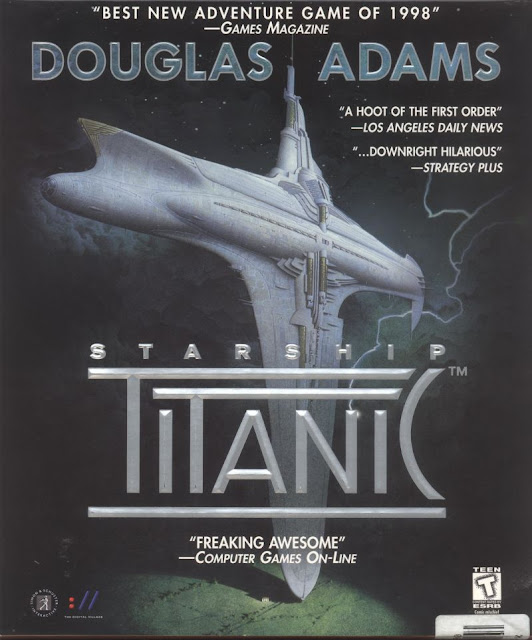 |
Developed by The Digital Village, and released on PC by Simon & Schuster Interactive on April 2, 1998, Starship Titanic is a first-person adventure game from author, Douglas Adams.
|
The "FUN" section in the Friday paper was my go-to for PC game news and
reviews in the 90's. The Baton Rouge Advocate publication always had interesting
features, including a yearly cover-story on exciting upcoming releases every
fall. I found out about one of my personal favorites, 1996's
Timelapse, through the FUN section.The next fall, I learned about another
exciting new PC release:
Starship Titanic. This game was being written and designed
by one of my favorite authors,
The Hitchhiker's Guide to the Galaxy's Douglas
Adams. From
Myst's release in 1993, to the end of the decade, first-person
point-and-click adventure games were dominant. Now, one of my favorite authors
was making one. This seemed to be a match made in heaven! But...the game
released in early 1998 with little fanfare. I've thought about it every now and
then...but didn't give it a try until five years after it was re-released by GOG in 2015. Did I wait too long to play
Starship Titanic?
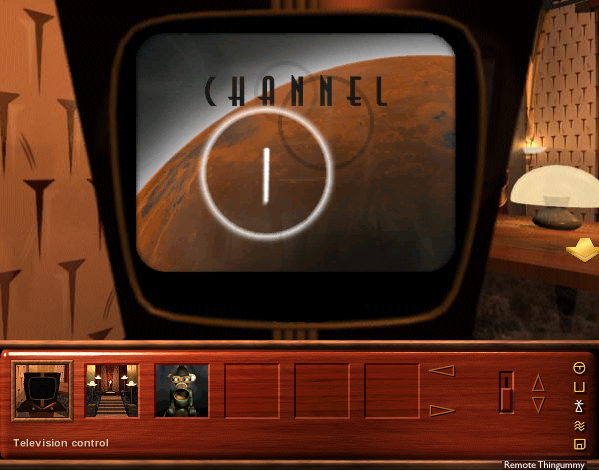 |
Stay tuned...for the next paragraph.
|
No. I'll end the suspense immediately. I should have waited forever.
Ironically, a game named after
one of the worst disasters in maritime history, centered around a disastrous space voyage, is a disaster.
Starship Titanic does have some pros, though. Perhaps chief among these is the
game's setting. The 90's point-and-click games often featured a cool, often 70's
throwback science fiction vibe. That's alive and well here. The game takes place
almost entirely on the malfunctioning titular ship, populated solely by malfunctioning robots who
only seem to want to perturb the player. Something's wrong with the ship--after
all, the game starts with it crashing into the player's house on Earth, before it takes them into space. Turns out the robots want you to figure out what has gone wrong
with their interstellar cruise ship home.
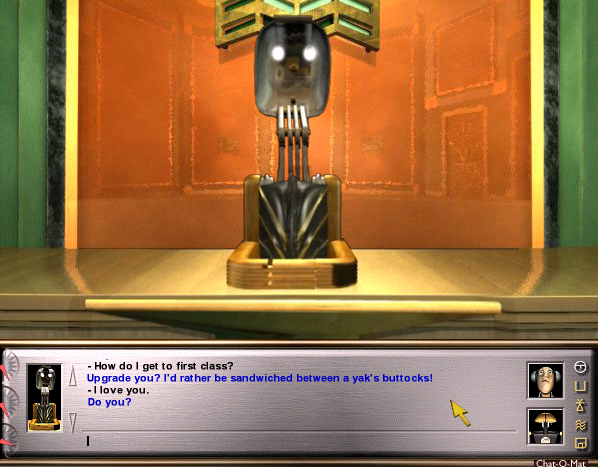 |
No, and truthfully, I haven't lied this hard in a while.
|
The developers created a complex dialogue system so that the player can
communicate with the ship's robots. They've taught these robots hundreds of words and sentence structures. There are no pre-ordained sentences for the
player to use. You type in what you want to ask the robots and rather
surprisingly, they often know what you're talking about, though their replies
aren't often very helpful. Also, Douglas Adams wrote most of the robot's replies, so a
lot of them are pretty damn funny. To progress through the game, you've got to
find ways to increase your passenger status, from third to second to first
class, often by solving puzzles, and reprogramming and deceiving the robots. The end goal is to find
and reinsert the ship AI's missing pieces, so that the
Starship Titanic can
return to spaceworthiness.
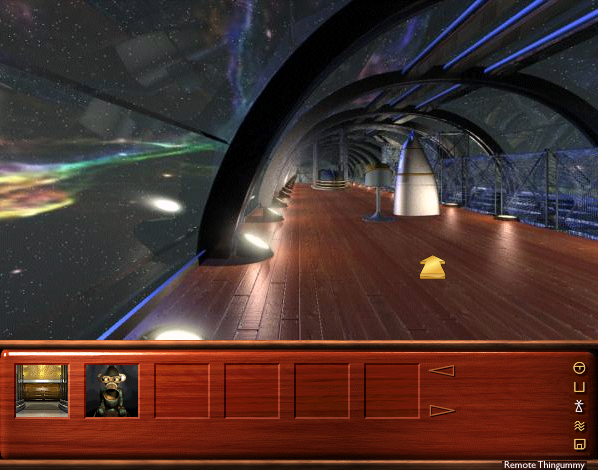 |
Conversely, nothing can save this game.
|
Starship Titanic's got a unique vibe, that's for sure. Many point-and-click games at
the time, particularly the two others I mentioned, often focus on lonely
vibes. The player is often the only living human wandering around those games' mysterious landscapes. Here, the vibe is similar, but the robots, often
disrespectful at worst, and unhelpfully sour or whining at best, somehow add an
extra layer of alienation to
Starship Titanic.The 3D, pre-rendered graphics and animation,
top-of-the-line for the late 90's, are pretty slick. The art-deco design of the
titular ship is cool. Hey...uh, the voice acting is good. Monty Python alums
John Cleese and Terry Jones provide character voices, among other great, mostly
British talent. The new-agey cruise ship musak isn't bad and enhances the mood.
Those are all of the nice things I have to say.
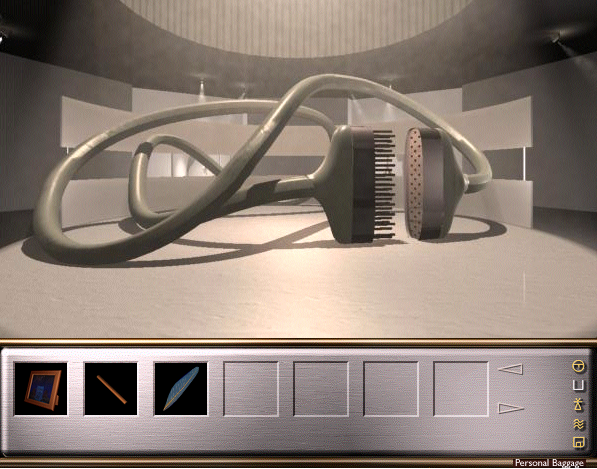 |
I had to "comb" this game pretty hard to find those compliments.
Now I hate Starship Titanic even more for forcing me into that pun.
|
You may have noticed that none of those nice things actually have anything to do
with how this game plays. That's because
Starship Titanic's gameplay is
terrible. 90's point-and-click adventure games often tried to make their puzzles
difficult in order to extend gameplay. However, there was often a fine-line
between "difficult" and "obtusely impossible." The best games walked that line with
delicate mastery.
Starship Titanic does not.
This game's puzzles barely make
sense, even when you're reading the solutions from an FAQ. These things follow a logic only a malfunctioning robot would understand. Last I checked, malfunctiong robots don't play adventure games. What's worse, the
interface is awful. Sometimes, you'll actually figure out one of
Starship Titanic's clunky puzzles, only to have the game inadvertently and ineptly discourage you
from that solution when you're trying to apply it.
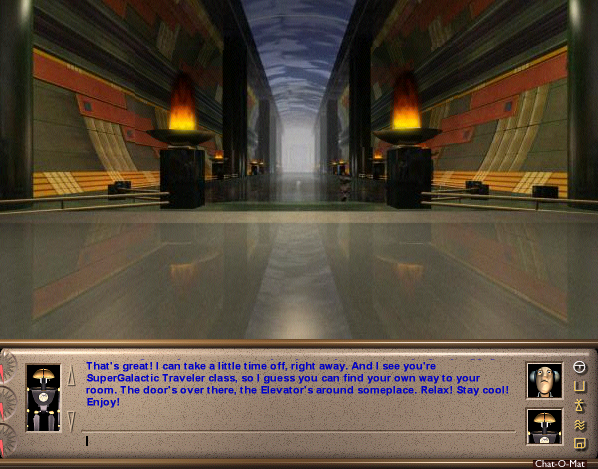 |
Wow. What would I do without your help? Also, I hate you.
|
If you don't click in the pinpoint right spot, you don't do a huge list of steps in
just the right arbitrarily decided order, you don't notice a detail that's
nearly completely obscured, then you feel like you need to go back to the drawing board. The thing is--you were doing the right thing! The game just didn't notice!
Oh yeah, and if you make
a mistake, like say, putting the wrong condiment on the chicken (I hate that
damn chicken puzzle), you've got to do so much annoying backtracking, you'll
want to punch through the screen.
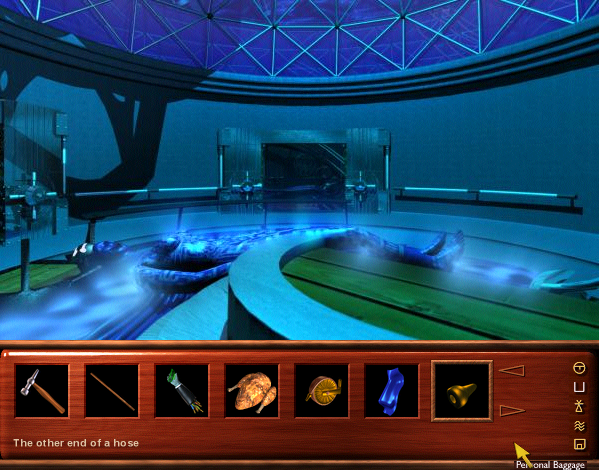 |
Yeah, I think I'll let someone else put you back together. These robots seem pretty competent, maybe they can do it.
|
Starship Titanic isn't a long game. The ship's layout, which isn't very
intuitive, doesn't actually cover
a lot of terrain--it's a small game map, in total. If you go into this game knowing the answers to all the puzzles, you can finish it in an hour. If not, and
you're flailing around trying to figure just what the hell your supposed to be
doing, and how you're supposed to be doing it, the game might take you five to
ten hours to finish. Or infinity. I don't know.
Starship Titanic is such
an exercise in frustration, maybe it's best you never finish it...maybe it's
best if you never play it at all. The dialogue and setting are fun, but you can
get those from a Douglas Adams novel. You don't have to solve any obtuse,
tedious puzzles to experience them. You only have to know how to read.
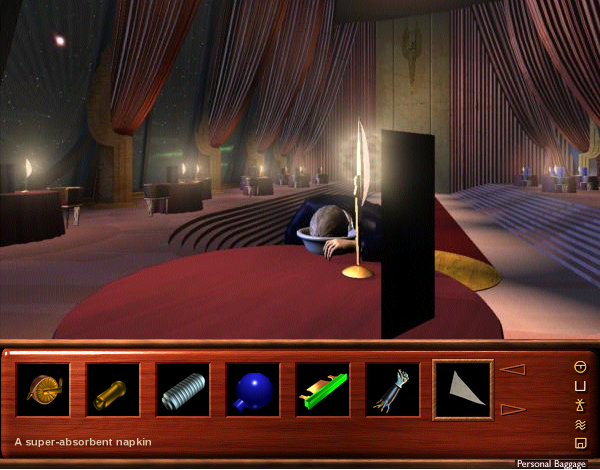 |
Hey, who took my picture when I was done playing this?
|










Comments
Post a Comment